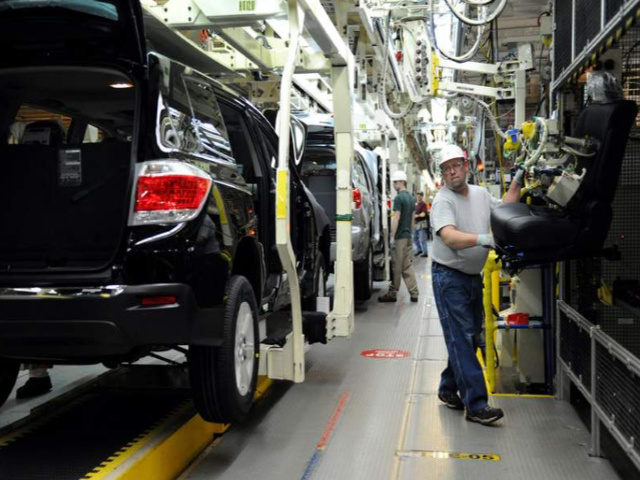Softness in U.S. manufacturing production continued into March, suggesting that sluggish economic growth around the globe has become a drag.
Manufacturing production was expected to rise 0.3 percent last month but instead came in unchanged, Federal Reserve data released Tuesday showed. Production fell in the first two months of 2019, including a 0.3 percent decline in February. Taken together, the monthly data show that output declined in the first quarter at an annual rate of 1.1 percent, the first quarterly decline since 2017.
This suggests that manufacturing will not contribute much to overall growth in 2019.
The broader category of industrial production–which includes the output of factories, mines and utilities–fell 0.1 percent in March. Output from utilities rose 0.2 percent and output declined 0.8 percent. Mining had been a source of growth in industrial output and even with the decline in March, output is up 10.5 percent compared with the prior year.
The auto industry’s output contracted in March. Vehicle production fell 2.5 percent on a monthly basis and is down 4.5 percent on an annual basis.
There were some signs of strength. High-tech production rose 0.2 percent in March and is up 3.5 percent on a yearly basis. The manufacturing of business equipment rose 0.4 percent, partially reversing February’s sharp 0.8 percent drop. For the year, this is up 3.8 percent.
The rise in business equipment and high tech production may indicate that businesses are investing in machinery due to the tight labor market and rising wages.
The Fed report does not break out export data but weak demand around the world is the most likely cause for the sluggishness of the U.S. manufacturing sector.

COMMENTS
Please let us know if you're having issues with commenting.